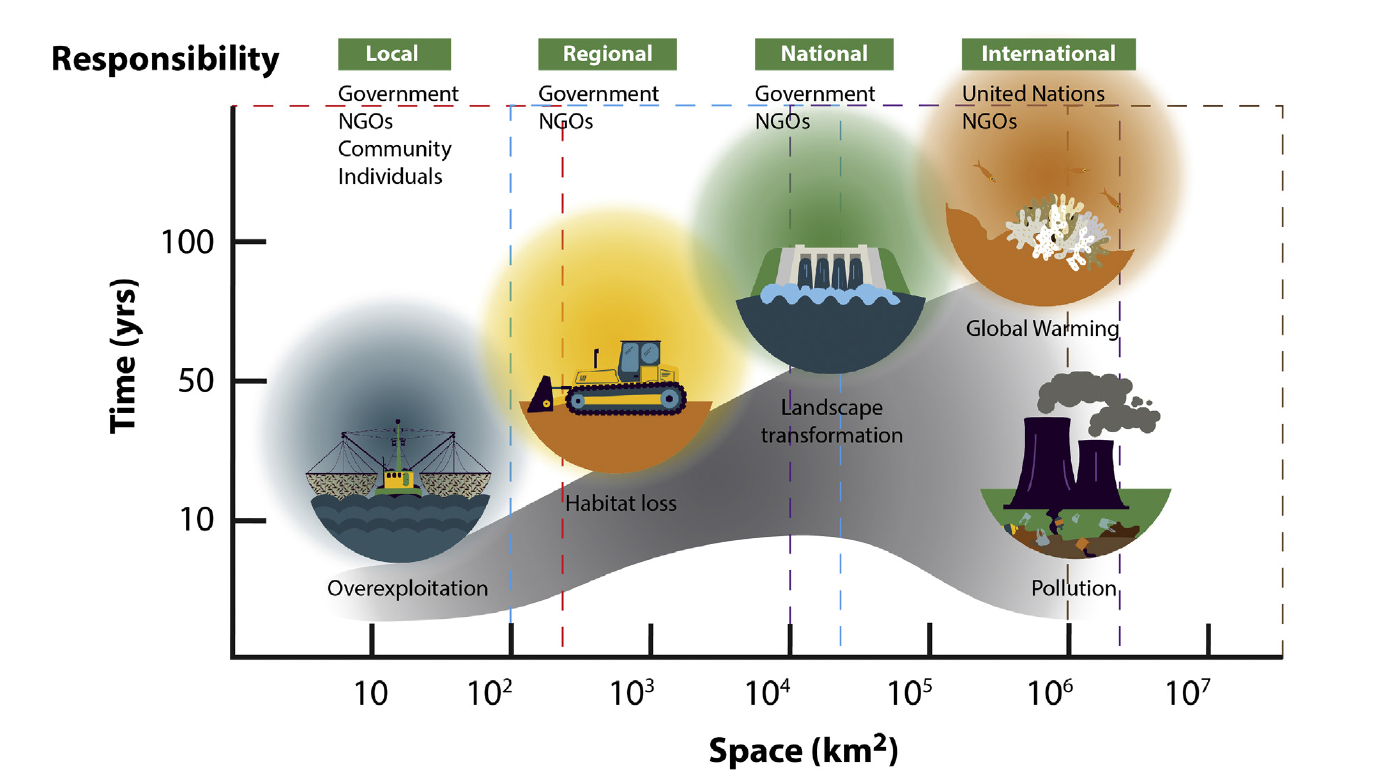
The world is currently experiencing the sixth mass extinction event on Earth. Since 1970, global wildlife populations have declined by 65%, and the population size of freshwater species – living in lakes, rivers and wetlands – has declined by 83%. Earlier this month, a landmark United Nations report entitled “Global Assessment Report on Biodiversity and Ecosystem Services” was released, outlining that a million animal and plant species are being driven toward extinction. Global biodiversity loss is indeed one of environmental crises, which may imperil the survival of humanity.
So far, it remains a great challenge to identify and implement effective solutions or strategies to tackle the crisis of biodiversity loss. With an ever-growing list of threats to biodiversity, such as global warming, landscape transformation, habitat loss, population growth, pollution and overexploitation, conservationists and policy makers struggle to determine which and how to address. A common solution or response is to prioritise their efforts on threats to individual species or management areas.
However, this narrow-minded approach is detrimental to the overall goal of saving species and ecosystems worldwide, as argued by professionals.
In an article published in the journal Trends in Ecology & Evolution (impact factor, 15.938) one week ago, conservation biologists urge for the needs of large-scale, multidimensional, long-term collaboration to tackle both proximal and horizon threats to biodiversity. This is a cooperative study conducted by researchers from The University of Hong Kong, Princeton University and Griffith University. Based on a comprehensive review of conservation interventions that successfully address multiple threats (win-win), they put forward a graphical model as displayed.

The researchers point out that the current problem is the limited resources available in conservation disciplines, which hinder the ability for broader collaboration with other scientists as well as between local, regional, and international agencies. The authors warn that this lack of collaboration is of concern since interactions between local and global-scaled threats can combine and become much more difficult to manage. However, “to get away from the compartmentalized approach to conservation, we need to find ways to encourage integrative research that considers current and future threats. This means involving social scientists, local stakeholders, and political leaders as well.” These words were said by Dr Timothy Bonebrake from The University of Hong Kong and cited in the press release of the publication.
The model or framework present in the article is insightful and comprehensive. However, great effort is still needed to put the model into practice to identify and implement win-win conservation interventions or solutions to effectively mitigate the impacts of multiple threats to biodiversity. As concluded by the authors, “we now need to double down on integrative research, mitigation strategies, and scientific communication” in order to protect the world’s biodiversity.
About the Research Paper
Journal: Trends in Ecology and Evolution
Title: Integrating Proximal and Horizon Threats to Biodiversity for Conservation
Authors: Bonebrake T., Dingle C., Baker D., et al.
Link of the research paper:
www.cell.com/trends/ecology-evolution/fulltext/S0169-5347(19)30104-1

Leave a Reply